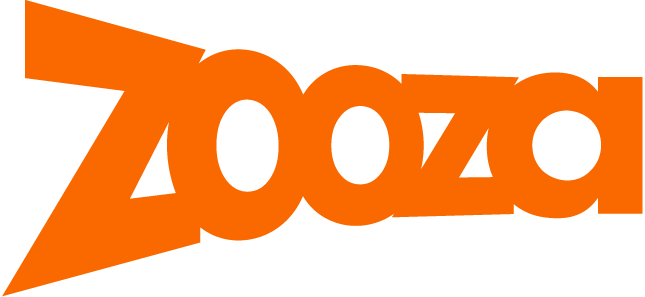In the dynamic landscape of children’s activity businesses—ranging from dance studios and tutoring centers to sports academies—technology plays a pivotal role in streamlining operations, enhancing customer experiences, and driving growth. However, many of these businesses find themselves tethered to outdated or custom-built software systems. The primary reason? A significant investment of time, money, and resources already sunk into these legacy systems.
This scenario exemplifies the sunk cost fallacy, a cognitive bias where past investments unduly influence current decision-making, often leading businesses to persist with suboptimal solutions. Recognizing and addressing this fallacy is crucial for businesses aiming to remain competitive and responsive to evolving market demands.
Understanding the Sunk Cost Fallacy
The sunk cost fallacy arises when individuals or organizations continue an endeavor based on previously invested resources, rather than evaluating the current and future benefits of continuing versus changing course. In the context of children’s activity businesses, this might manifest as:
- Continuing to use a custom-built software system developed years ago, despite its limitations, because of the substantial initial investment.
- Avoiding the adoption of modern, cloud-based solutions due to the perceived waste of abandoning the existing system.
Such decisions, while emotionally understandable, can hinder operational efficiency and growth.
Implications for Children’s Activity Businesses
1. Operational Inefficiencies
Legacy systems often lack integration capabilities, leading to manual data entry, fragmented information, and increased chances of errors. This not only consumes valuable staff time but also affects the quality of service delivered to clients.
2. Limited Scalability
As businesses grow, their software needs evolve. Outdated systems may not support new functionalities or increased user loads, restricting the business’s ability to expand or diversify offerings.
3. Security Vulnerabilities
Older software may not receive regular updates or patches, making them susceptible to security breaches. In an era where data protection is paramount, this poses significant risks.
4. Competitive Disadvantage
Competitors leveraging modern software solutions can offer enhanced user experiences, streamlined operations, and data-driven insights, potentially attracting more clients and gaining market share.
Strategies to Overcome the Sunk Cost Fallacy
1. Shift Focus to Future Benefits
Instead of dwelling on past investments, evaluate the potential advantages of adopting new systems: improved efficiency, better user experiences, and scalability. As highlighted by Asana, recognizing that past costs are irrecoverable can aid in making more rational decisions .Number Analytics+2Verywell Mind+2Asana+2
2. Conduct a Cost-Benefit Analysis
Assess the long-term costs of maintaining the current system versus investing in a new solution. This includes considering maintenance expenses, lost opportunities, and potential revenue gains from improved operations.
3. Engage Stakeholders
Involve staff, clients, and other stakeholders in discussions about system limitations and potential improvements. Their insights can provide a clearer picture of the current system’s shortcomings and the benefits of modernization.
4. Pilot New Solutions
Before a full-scale transition, consider piloting new software solutions in specific departments or functions. This approach allows for assessing the new system’s effectiveness and gathering feedback without a complete overhaul.
5. Seek Expert Consultation
Engage with IT consultants or software vendors specializing in children’s activity businesses. Their expertise can guide the transition process, ensuring minimal disruption and optimal outcomes.
Case in Point: The Concorde Fallacy
A classic example of the sunk cost fallacy is the Concorde project, where British and French governments continued investing in the supersonic jet despite clear indications of its commercial unviability. This scenario underscores the dangers of allowing past investments to dictate present decisions .Asana+2upsun.com+2builtin.com+2
1. Bright Beginnings Preschool: Embracing Technology for Growth
Bright Beginnings Preschool, operating three centers in Charlottesville, Virginia, faced challenges common to many childcare providers: administrative burdens, communication gaps, and the need for efficient staff management. Despite prior investments in their existing systems, they adopted Procare’s childcare management software.ProCare SoftwareProCare Software
Outcomes:
- Time and Cost Savings: Automation of routine tasks allowed staff to focus more on child care rather than administrative duties.olbuz+6ProCare Software+6Illumine+6
- Enhanced Communication: The mobile app facilitated real-time updates to parents, increasing engagement and trust.ProCare Software
- Improved Staff Management: Streamlined scheduling and staffing tools ensured optimal staff-to-child ratios and compliance with regulations.
This strategic shift led to improved efficiency and allowed the centers to scale effectively. ProCare Software
2. Wundercare: Developing a Scalable Childcare Management Platform
Wundercare aimed to create a comprehensive, cloud-based childcare management system to replace fragmented and outdated processes. By partnering with Mindbowser, they developed a platform that addressed various operational needs.Mindbowser
Key Features:
- Multi-User Roles: Accommodated different access levels for administrators, staff, and parents.Mindbowser
- Comprehensive Management: Handled class creation, staff scheduling, child enrollment, and invoicing within a unified system.Mindbowser+1Omnify+1
- Agile Development: Utilized DevOps methodologies for efficient development and deployment.Scribd
The result was a robust, scalable solution that enhanced operational efficiency and user satisfaction.
3. Large Afterschool Program: Streamlining Operations with iCare Software
Managing 9,000 active children across 80-100 sites, this afterschool program faced significant administrative challenges. Transitioning to iCare Software allowed them to centralize and streamline operations.ProCare Software+3Icare Software+3Icare Software+3
Achievements:
- Efficient Billing: Processed $850K in monthly subsidies and $200K in private billing seamlessly.Icare Software
- Compliance and Auditing: Achieved fast, error-free audits for subsidies and licensing.Icare Software
- Improved Documentation: Maintained smooth documentation and compliance for teacher-child ratios across all sites.Icare Software+1Illumine+1
This move significantly reduced administrative burdens and improved overall program management.
4. Gymnastics Club in Chicago: Doubling Revenue Through Strategic Changes
A gymnastics club in Chicago, initially averaging 450 enrolled children and $590K in gross revenue, sought to expand its reach. By implementing targeted marketing strategies and adjusting pricing, they experienced substantial growth.Omnify+12The Small Business Champions+12ProCare Software+12
Results:
- Increased Enrollment: Achieved their goal of 900 enrolled students.The Small Business Champions
- Revenue Growth: Doubled gross revenue from $590K to $1.2 million.The Small Business Champions
- Enhanced Staff Compensation: Raised staff wages, leading to reduced turnover and increased satisfaction.The Small Business Champions
This case underscores the impact of embracing change and investing in strategic improvements.
Quantifiable Benefits of Modernizing Software Systems
1. Operational Cost Reduction
Businesses that modernize their legacy systems often experience significant cost savings. According to a report by WellDev, companies can achieve up to a 30–50% reduction in operational costs over five years after modernization .vFunction+1Welldev+1Welldev
2. Enhanced Productivity
Modern software solutions can lead to a 40% increase in employee productivity, as they streamline processes and reduce manual tasks .The Intellify -+3Orange 142+3Priority Software+3
3. Time Savings in Administrative Tasks
Implementing comprehensive childcare management software can drastically reduce administrative hours. For instance, Oakdale Private School in Houston, Texas, reduced its administrative workload by 75%, going from 80 hours per week down to 20 hours, by adopting iCare’s automation features .ProCare Software+2Icare Software+2Dev Technosys+2
4. Improved Revenue Collection
Automated billing and payment systems not only save time but also enhance revenue collection. Bright Beginnings Preschool reported that Procare’s automated billing saved countless hours and reduced errors, leading to higher revenue .recordpoint.com+2Orange 142+2Dev Technosys+2ProCare Software
🔍 Case Studies Highlighting Success
- Bright Beginnings Preschool: By integrating Procare’s technology, they streamlined operations, improved parent communication, and enhanced staff management, leading to business growth .Blossom Educational
- Oakdale Private School: Utilizing iCare’s automation, they significantly cut down administrative hours, allowing staff to focus more on child development .Icare Software+1Dev Technosys+1
📈 Strategic Advantages
Beyond immediate operational improvements, modernizing software systems positions children’s activity businesses for long-term success by:
- Enhancing Customer Experience: Modern platforms offer user-friendly interfaces and features that meet the expectations of today’s tech-savvy parents.codica.com+1ProCare Software+1
- Facilitating Scalability: Cloud-based solutions allow for easy expansion, accommodating business growth without significant additional investments.The Intellify -+1Priority Software+1
- Ensuring Compliance and Security: Up-to-date systems are better equipped to handle data security and regulatory compliance, reducing risks associated with outdated software.
Conclusion
For children’s activity businesses, clinging to outdated software systems due to past investments can impede growth, efficiency, and competitiveness. By recognizing the sunk cost fallacy and focusing on future benefits, these businesses can make informed decisions that align with their long-term goals and client expectations.
What Comes After Letting Go? A Smarter Way Forward with Zooza
Once you’ve recognised the sunk cost fallacy and the limitations of legacy systems, the next question is: What now?
That’s where Zooza comes in.
Zooza isn’t just another booking system—it’s an infrastructure designed for businesses that deliver children’s activities at scale. Whether you’re running a small local club or managing a national franchise network, Zooza adapts to your operations and grows with you.
- 📊 Real-time reporting that gives you clarity without spreadsheets.
- 👨👩👧 Parent-friendly interfaces that boost engagement and reduce dropouts.
- 🧠 Automation for admin tasks, so you can focus on impact, not inboxes.
- 🌍 Franchise-ready architecture built for consistency and local flexibility.
And best of all? It’s built by people who know what it’s like to run kids’ classes. We speak your language—even when it’s a mix of chaos, coffee, and last-minute tutor changes.
🧩 Thinking of switching but nervous about the transition? We’ve helped dozens of teams migrate from outdated systems without losing their data, sleep, or clients.
The future isn’t just better software. It’s a better way of working.
👉 Learn more at www.zooza.online or get in touch for a free discovery session.
Further Reading
- Asana. (2025). How Sunk Cost Fallacy Influences Our Decisions. Retrieved from https://asana.com/resources/sunk-cost-fallacy
- Upsun. (2025). Avoiding the Sunk Cost Fallacy in App Modernization. Retrieved from https://upsun.com/blog/avoid-the-sunk-cost-fallacy/
- The Decision Lab. (n.d.). The Sunk Cost Fallacy. Retrieved from https://thedecisionlab.com/biases/the-sunk-cost-fallacyThe Decision Lab
- ECI Software Solutions. (2025). Are You A Victim Of Sunk Cost Fallacy?. Retrieved from https://www.ecisolutions.com/blog/office-technology/are-you-a-victim-of-sunk-cost-fallacy/ECI Software Solutions
- Built In. (n.d.). What Is Sunk Cost Fallacy?. Retrieved from https://builtin.com/articles/sunk-cost-fallacybuiltin.com
















